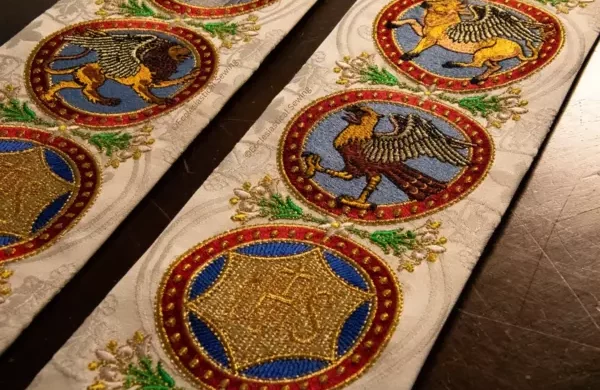
Faith symbols are powerful tools for teaching, often overlooked. Christianity’s symbols, like the Winged Man, Lion, Bull, and Eagle, go beyond decoration, sparking curiosity and fostering learning. We stick to traditional symbols to preserve their deep meaning, rejecting abstract designs that risk diluting significance. Keeping these symbols rich in meaning is our commitment, ensuring they continue to inspire and educate.
Like this:
Like Loading...
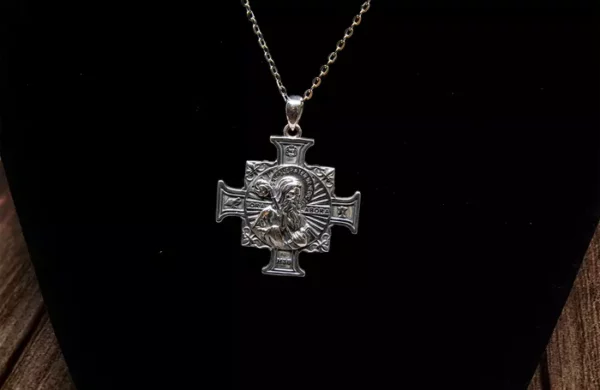
Saint Benedict of Nursia, born around 480 AD, made a big impact on Western history. During the fall of the Roman Empire, he created the Benedictine Rule—a guide for living a balanced life with prayer, work, and study. His Rule focused on stability and obedience as ways to find true freedom and spiritual growth. Saint Benedict’s teachings remind us of the importance of living with purpose and order.
Like this:
Like Loading...
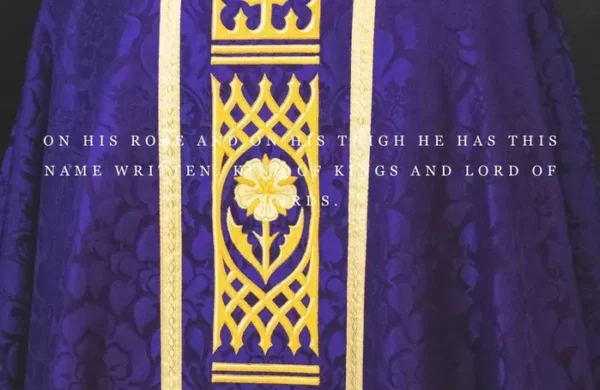
The chasuble is the outermost liturgical vestment worn by priests and bishops during Mass. Originating from the Roman paenula, it evolved into a distinct Christian vestment by the Middle Ages, symbolizing the yoke of Christ and the priest’s role as a mediator. Typically made from luxurious fabrics, the chasuble’s design and color vary according to liturgical traditions and the Church calendar. Symbolically, it represents charity, God’s grace, and the priest’s role in offering the Eucharist.
Like this:
Like Loading...
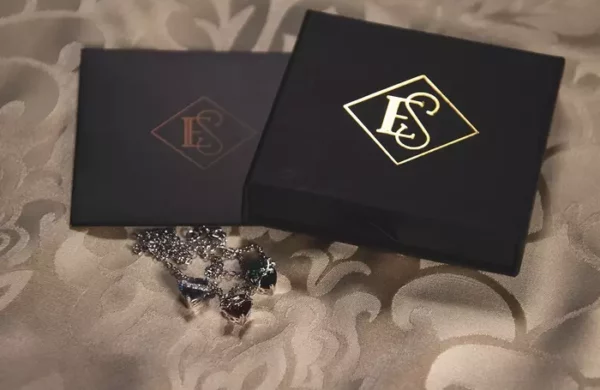
The Sacred Heart symbolizes the profound love and compassion of Jesus Christ and gained popularity in the Middle Ages, especially through the visions of Saint Margaret Mary Alacoque in the 17th century. Alongside it are the Chaste Heart of Saint Joseph, representing purity and care for Jesus and Mary, and the Immaculate Heart of Mary, pierced by a sword to signify her sorrow and unwavering love. Together, these hearts embody the love, sacrifice, and purity central to Christian belief, offering insight into the spiritual and historical foundations of Christianity.
Like this:
Like Loading...

San Roque, also known as Saint Roch, was a French saint born around 1295 who dedicated his life to healing the sick during the plague. He is remembered for his miraculous healing powers, humble pilgrimages, and divine assistance from a dog when he fell ill. San Roque’s feast day on August 16th celebrates his legacy of compassion, faith, and service, reminding us to care for others, maintain resilience in the face of adversity, and selflessly serve our communities
Like this:
Like Loading...
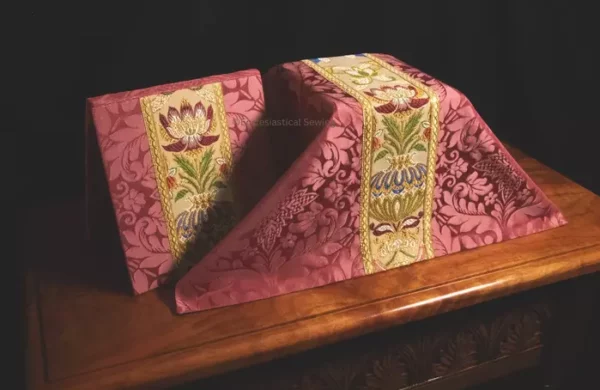
Rose-colored garments are worn on Gaudete Sunday in Advent and Laetare Sunday in Lent, offering a moment of joy amidst preparation and reflection. This tradition dates back to medieval times, symbolizing anticipation for Christ’s coming with themes of joy, love, and hope.
Like this:
Like Loading...
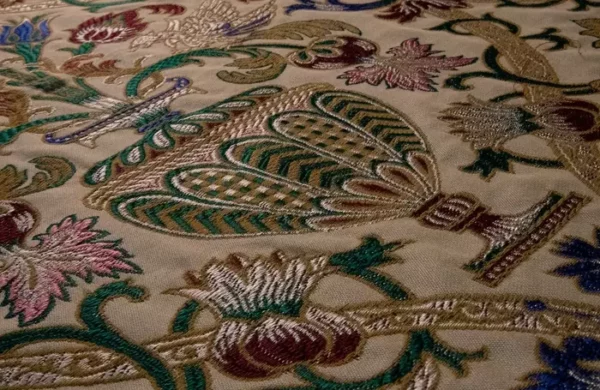
The Venetian Tapestry Brocade, designed by F.W. Plaistow in the 1950s, is a remarkable textile known for its intricate design and exceptional craftsmanship. Influenced by 15th-century Venetian art and classical Roman architecture, it features a linear layout and the symbolic Griffin, representing Jesus in medieval Christian art. This tapestry stands out due to its meticulous attention to detail, rich historical significance, and luxurious texture, offering a unique tactile experience that surpasses ordinary fabrics.
Like this:
Like Loading...
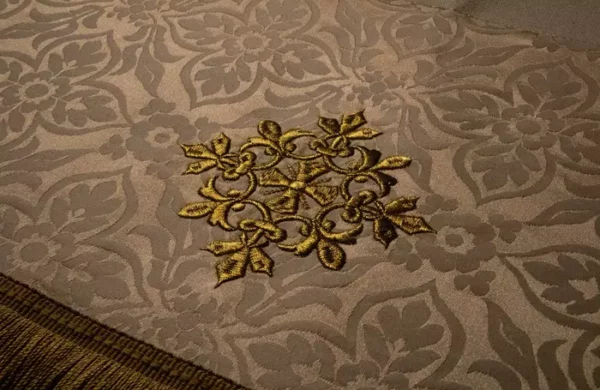
Chelmsford Silk Damask Fabric, created in the Geoffrey Webb style and dating back to the 1920s. Ideal for various liturgical vestments and hand embroidery projects, this high-quality silk fabric features a small floral motif, is soft, light, breathable, and drapes beautifully. The blog also highlights a recent project using this fabric, an altar frontal with a cross-leaf embroidery design, showcasing its elegance and suitability for many settings.
Like this:
Like Loading...
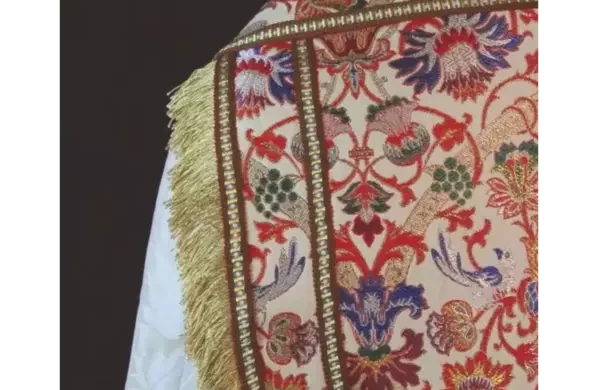
Discover the Aragon Liturgical Tapestry Fabric, steeped in history and adorned with birds and Christian symbols. Ideal for different projects, it blends well with other fabrics, offering endless design options.
Like this:
Like Loading...

Yarn-dyed fabrics for church clothes have brighter colors and last longer than piece-dyed ones. We dye the yarn before weaving, making the colors deeper and lasting longer. Our clothes look beautiful and stay strong over time, making worship more special.
Like this:
Like Loading...
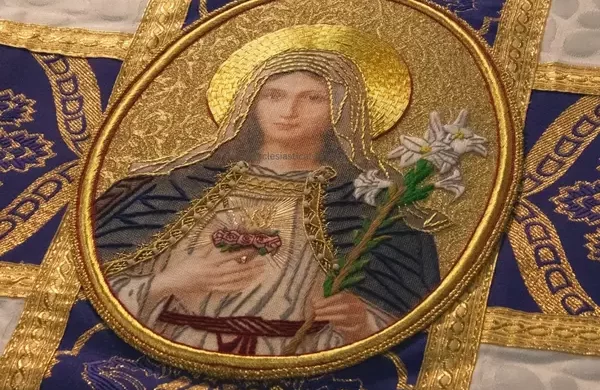
Brocade fabric is famous for its detailed patterns and durability. It costs more because it’s made with high-quality materials and takes a lot of work to produce. But it lasts a long time and keeps its colors bright, making it worth the investment for lasting elegance.
Like this:
Like Loading...
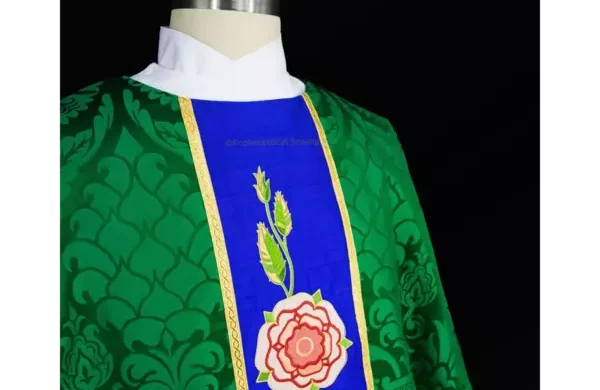
Discover the beauty of silk damask fabric, known for its rich history and luxurious feel. Despite its higher price, silk damask offers superior quality, crafted with genuine silk threads and intricate weaving techniques. Investing in silk damask means investing in elegance and beauty for your projects.
Like this:
Like Loading...

We’re excited to share our beautiful new jewelry collection that helps you express your faith in style! Featuring shiny Cubic Zirconia stones in silver and gold, this collection includes popular pieces that sell out quickly. You’ll find elegant necklaces, pendants, and pins perfect for any occasion, including special gifts for brides and bridesmaids. Stay tuned for more amazing additions in our collection!
Like this:
Like Loading...
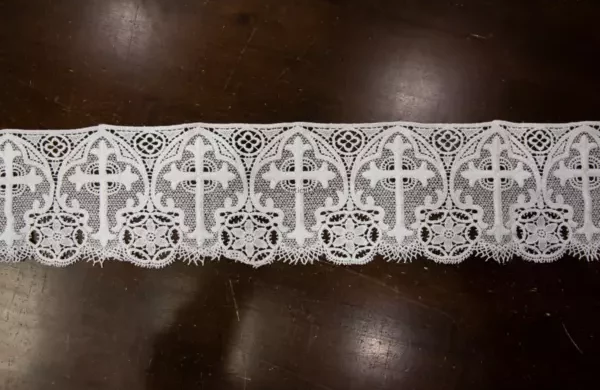
Church Lace: Beauty and Reverence” explores how lace, known for its delicate patterns, has adorned churches for centuries. It symbolizes purity and devotion, adding elegance to altars and vestments, fostering a sense of reverence in worship.
Like this:
Like Loading...
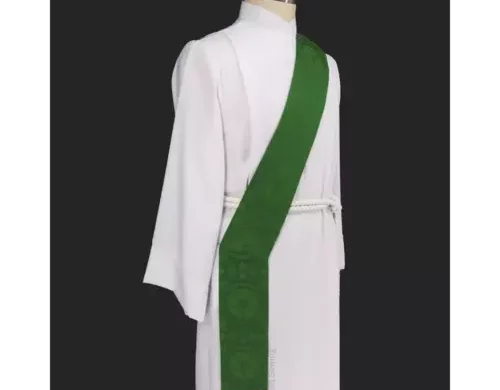
Learn the differences between pastoral and deacon stoles in ecclesiastical vestments. Pastoral stoles hang straight, symbolizing priestly authority, while deacon stoles are worn diagonally, representing servitude. Discover their historical significance and unique roles within church hierarchy.
Like this:
Like Loading...
















You must be logged in to post a comment.